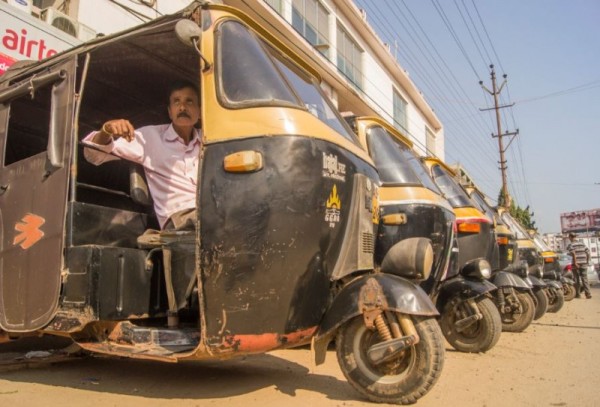

A video of a food vendor in Chandigarh allegedly using diesel to cook "parathas" has sparked anger and demands for investigation from the Indian food regulatory authority. However, the owner of the stall, Channi Singh, has clarified that the video was meant as a spoof by a blogger and they only use edible oil in their cooking. The blogger, Amanpreet Singh, has also apologized and clarified that the parathas were indeed cooked in cooking oil. This incident has highlighted the power of social media and the need for responsible content creation and consumption.
Diesel-Cooked Paratha Controversy in Chandigarh
A viral video on social media alleging that a food vendor in Chandigarh was using diesel to cook parathas triggered outrage and prompted demands for investigation from the Indian food regulatory authority. However, the stall owner and the blogger responsible for the video have since clarified the situation.
Background:
Parathas are a popular Indian flatbread typically cooked in edible oil or ghee. In recent years, there have been concerns about the use of diesel or other fuels in food preparation, posing health risks to consumers.
The Viral Video and Clarification:
The video, which went viral on platforms like Google and YouTube, showed a man pouring a liquid from a diesel can into a tawa while cooking parathas. This sparked immediate backlash and condemnation.
However, the owner of the stall, Channi Singh, denied the allegations, stating that the video was a "spoof" by a blogger. He clarified that they only use edible oil in their cooking process.
The blogger responsible for the video, Amanpreet Singh, also issued an apology, acknowledging that the parathas were actually cooked in cooking oil. He explained that the diesel had been used for dramatic effect in the spoof video.
Investigation and Regulatory Responsibilities:
Despite the clarifications, the Food Safety and Standards Authority of India (FSSAI) initiated an investigation into the matter. The authorities collected samples from the stall and sent them for testing.
The FSSAI has a mandate to ensure the safety and quality of food consumed in India. It has strict regulations against the use of harmful substances in food preparation, including fuels like diesel.
Top 5 FAQs and Answers:
1. Was diesel actually used to cook parathas? No, the stall owner and the blogger have both clarified that the video was a spoof and that only edible oil was used in the cooking process.
2. What prompted the video's creator to use diesel in the video? The blogger stated that the diesel was used for dramatic effect in the spoof video.
3. What are the health risks associated with diesel-cooked food? Diesel is not meant for human consumption and can pose serious health risks, including respiratory problems, gastrointestinal issues, and cancer.
4. What is the FSSAI's role in this incident? The FSSAI has initiated an investigation to verify the claims made in the video and to ensure compliance with food safety regulations.
5. How can consumers protect themselves from such incidents? Consumers should be vigilant about the food they consume and report any concerns or suspicions about food safety to the relevant authorities.

The main accused and owners of the Goa nightclub where a massive fire killed 25 people have fled to Phuket, according to Goa Police. The police have coordinated with Interpol to apprehend the accused as a Look Out Circular was issued against them. Meanwhile, an employee of the club has been arrested and the postmortem on all 25 deceased has been completed.

Experience a global perspective with the launch of "October 20, 2025e-Paper". Get your daily dose of news and reviews from cinema and streaming in "First Day First Show". Stay updated on the top 5 technology stories with "Today's Cache" and simplify science with "Science For All". Decode the headlines with hard facts in "Data Point" and learn to prioritize your health in "Health Matters". Stay updated on the literary world with "The Hindu On Books". All in one place!

The state of Maharashtra in India has set a new world record for installing the most number of solar agriculture pumps within a single month. The initiative, called 'Magel Tyala Saur Krushipump', saw the installation of 45,911 pumps, which was officially recognized by the Guinness World Records. The achievement was celebrated in a ceremony attended by Chief Minister Devendra Fadnavis.

Explore the historic and stunning Hyderabad House, located at 1, Ashok Road in Delhi near India Gate. Built in the 1920s for the last Nizam of Hyderabad, it boasts 36 rooms with grand stairways, unique European-Mughal style decor and striking marble patterns. After its government takeover in 1974, it has served as a prestigious venue for hosting foreign leaders, state banquets and VVIP meetings, with notable guests including Bill Clinton, Gordon Brown and George W. Bush. Take a virtual tour of this architectural gem and its rich history.

A spiritual education institution in Maharashtra, India is under investigation after a student reported sexual harassment by the head and a teacher. The student spoke out to authorities after being warned not to by the teacher and faced threats of repercussions if she did so. Both accused have been detained for questioning and a thorough investigation is being conducted. The incident has sparked concerns about transparency and external affiliations within the institution.

Environmental activist and founder of nonprofit Chintan, Bharati Chaturvedi, shared a frightening encounter with an Uber driver in Delhi on social media. Chaturvedi alleged that when she tried to stop the driver, he grabbed and twisted her arm and the city's women's helpline did not respond to her distress call. She also expressed frustration at the lack of immediate help and questioned how women in emergencies could reach authorities.

Good Friday 2024, happening two days before Easter Sunday, marks a significant day for Christians worldwide as it commemorates the crucifixion and death of Jesus Christ. It is a time for solemn reflection and contemplation as believers remember the ultimate sacrifice made for them. This year, Good Friday falls on March 29, and will be observed by Christians in various ways, including special services and prayers.

Vantara, a wildlife rescue and rehabilitation initiative by Reliance Foundation, has been cleared of all allegations of wrongdoings by the Supreme Court-appointed SIT. This validation of their work has given them the strength to continue their mission of serving voiceless animals with love and compassion. Vantara also expresses their gratitude and solidarity with the government and all stakeholders involved in animal care.

On November 16th, India commemorates National Press Day to acknowledge the vital role of the media in shaping the nation's democratic framework. As the Fourth Pillar of Democracy, the press serves as both a chronicler of truth and a watchdog that keeps those in power accountable. However, the day also serves as a reminder of the ongoing obstacles and challenges that threaten press freedom, including misinformation and censorship attempts. As we celebrate India's rich press history and honor journalists who bravely bring truth to the public, it is also an opportunity for reflection on the responsibility of the media and the need for independent journalism in a rapidly evolving digital landscape.

Rohini Acharya, the daughter of RJD party president Lalu Prasad, shocked everyone with her recent decision to quit politics and disown her family. In her cryptic post on X handle, she reveals that it was Sanjay Yadav and Rameez who convinced her to do so. Sanjay Yadav, a trusted aide of Tejashwi Yadav, and Rameez, an old friend of Tejashwi's, are believed to be the ones who influenced her decision. With the RJD's seat tally slipping to 24 from 75 in the recent Bihar assembly polls, many speculate that Rohini's decision may be linked to the expulsion of Tej Pratap Yadav from the party. However, details about her background and the story behind her name add more context and depth to the shocking news.